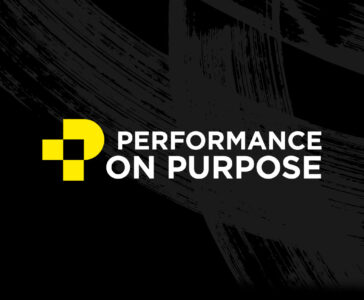Strategy work suffers under the misconception that it only benefits the business side of an organization. This isn’t a surprise since its most basic definition, deciding where you are going to play and how you are going to win, certainly sounds like a specifically business-oriented discussion. The truth is, your strategic planning process can have positive effects well beyond establishing a solid business footing. When done right, it can help your organization build a more united, resilient culture by nurturing three of the critical cultural attributes of successful companies: creativity, confidence, and development.
Inject creativity into your strategic planning
The ability to think creatively is a vital skill for the long-term stability of your business. And not just for leadership. To survive the accelerating rate of disruption, companies of all kinds need to elevate creative thinking at every level. As Forbes contributor, Peter Himmelman, writes, “…successful companies lay the groundwork for a culture that is well prepared for rapid change, and for the flexibility in thinking that change demands.”
When you prepare your team to collaborate on solutions where the path forward is unclear, you are investing in long-term strength. Consider using your strategy process—crafting and execution—as an opportunity to invite new faces and voices into the discussion. Two things will happen: 1. you get access to ideas you wouldn’t have otherwise, and 2. they get a chance to practice thinking creatively.
A great example of this idea in action is a strategy retreat we facilitated for HalloranSage, a 40-partner law firm with a significant presence in the Northeast. This two-day partner meeting was a unique opportunity to demonstrate a commitment to evolving the company culture. We spent time both as a large group and in smaller breakout teams discussing what was possible for the future. To encourage fresh thinking, we created the breakout groups by pairing people who didn’t usually work together. At various intervals, people were invited to offer their vision for how the firm’s future could look. At first, this was outside the comfort zone and experience of some participants. However, over the course of the exercise, enthusiasm and participation increased.
Much to the surprise of many in the room, the retreat ended with a clear vision statement and agreed upon strategic priorities. What followed in the months to come, was a dramatic reshaping of the firm’s public face and firm-wide initiatives to develop and integrate “true north” tenets (vision, purpose, values) into the organizational culture. None of this work would have been possible without the collective creativity of the team.
Grow confidence through participation, belonging, and purpose
There are two kinds of confidence at play in every organization: individual and corporate. They are equally important and intertwined so entirely that it is hard to know where one begins and the other ends. There is evidence, however, that the behaviors of those in leadership positions start the confidence ball rolling. The summary of a recent study by Mercer states, “You can increase employee confidence by ensuring your leaders, managers and HR professionals are articulating a compelling vision of the future, fostering the right culture, driving performance and creating compelling career paths.”
Strategic planning presents an ideal opportunity to plant seeds for all of these. Over the past few years, we have worked with Willington Nameplate on revitalizing their strategy. A family-owned manufacturer of permanent industrial labeling products, Willington was being hurt by increasing commoditization. We helped them initiate a strategy development process that addressed this concern as well as an increasingly disconnected workplace culture. We began by engaging the entire company around the topic of what the business stands for and what its future could look like.
This simple invitation began a transformative journey. As a result of these early workshops, the Willington team took ownership of the value they provide. They came to understand that the products they create are an essential element of their customers’ success and that their deep experience offers value that competitors new to the industry could never deliver.
This reframing and the organizational change that followed became a new source of confidence for declaring their value to the world, updating their brand and facilities, and changing how they approach their work. By involving everyone, they came together in a way they had never done before. This energy and engagement spilled over into new ideas for employee training, compensation, and recognition.
Since this work has progressed, the company has invested in significant infrastructure enhancements, transitioned from a process-driven to relationship-driven company, and hosted an industry event where they proudly shared their journey.
Employee development is a business builder
The benefits of employee development programs—from employee retention and engagement to corporate profits and productivity—are well-documented. Still, 40% of organizations admit they rarely or never provide career planning or development. So, what’s going on here? Based on my client conversations, leaders know it’s important, but they don’t make it important. That can be blamed on a perceived lack of time and (probably) a bit of short-sightedness. What we recommend, as we do with any new activity that feels daunting, is to find an easy place to start. Again, your strategic planning process can fit the bill here. It is something you are doing already so you have set aside the time, and, in our experience, the effects will extend far beyond your expectations.
Take for example the auto fleet leasing firm Motorlease. As the family-owned company transitioned to the third generation of leadership, they realized that it was time to update their strategic positioning and brand presentation.
Fathom worked with the company’s entire team to reveal some of the fundamental commitments the company had intuitively made over time that had allowed for its sustained success.
What became clear in this work is that unlike other, more corporate players in their field, the personal commitments Motorlease makes to driver care and satisfaction is unmatched—an insight that became the basis for the company’s brand promise.
This clarity of purpose revealed the need to retune every step of the customer journey and gave employees, whose potential had never been recognized, clear paths and opportunities to step into leadership roles. In many cases, after providing some preliminary coaching, the executive team was able to step out of the way and watch as new teams created results that would have been unthinkable without the skills of the broader group.
The takeaway
Strategic planning and execution is already a resource-intensive undertaking. Use it to even more significant effect by simultaneously working on aspects of your company culture that need attention.
Strategic Planning Guide for Leaders
This guide takes you through a set of principles and practices designed to help leaders and their organizations create strategies that move them toward the future they want to see.
Read the guideWant more from Fathom?
Sign up to receive updates about our articles.


